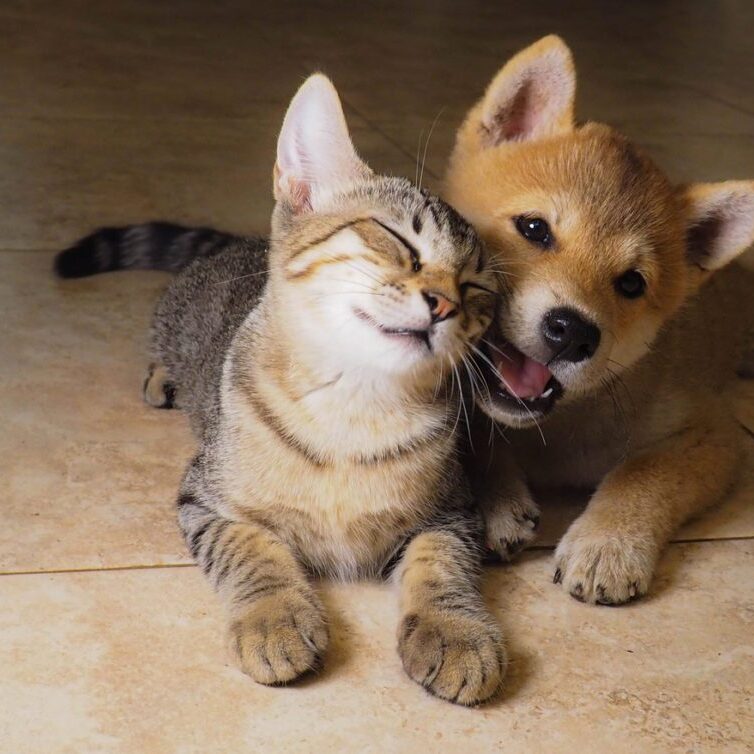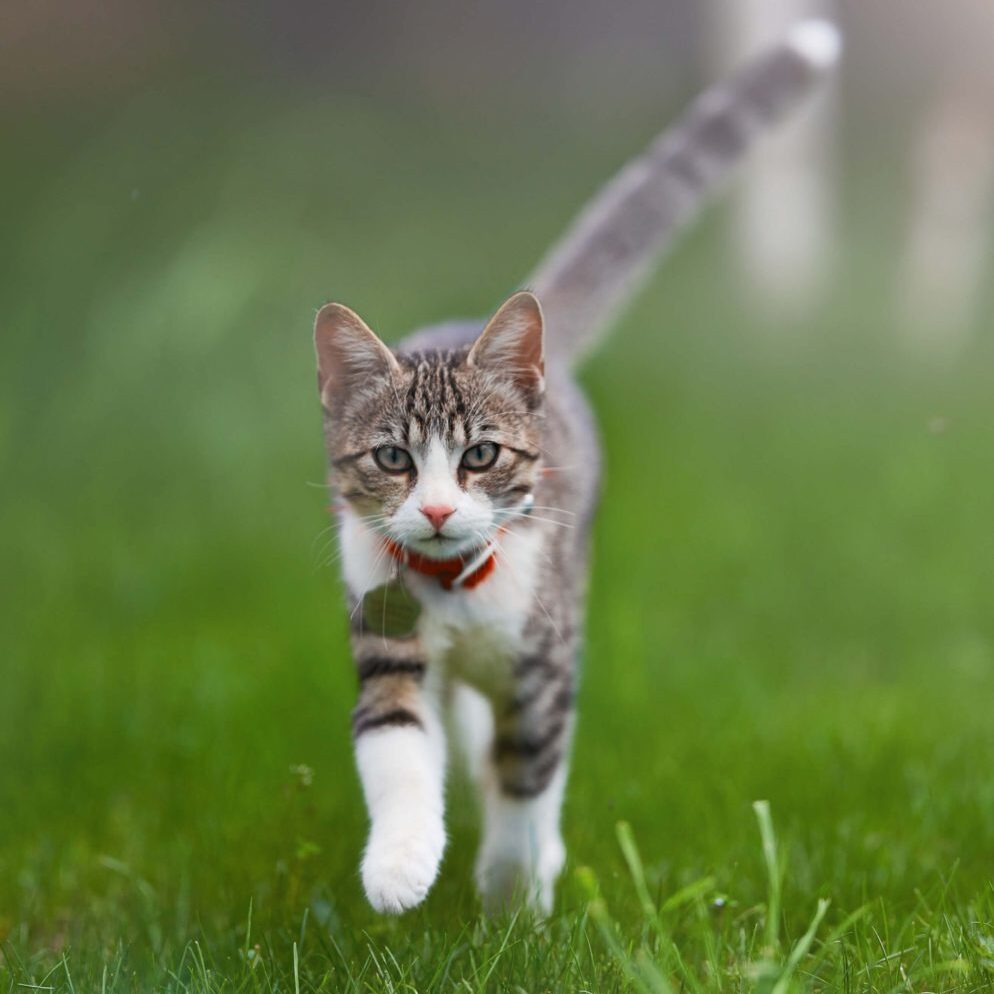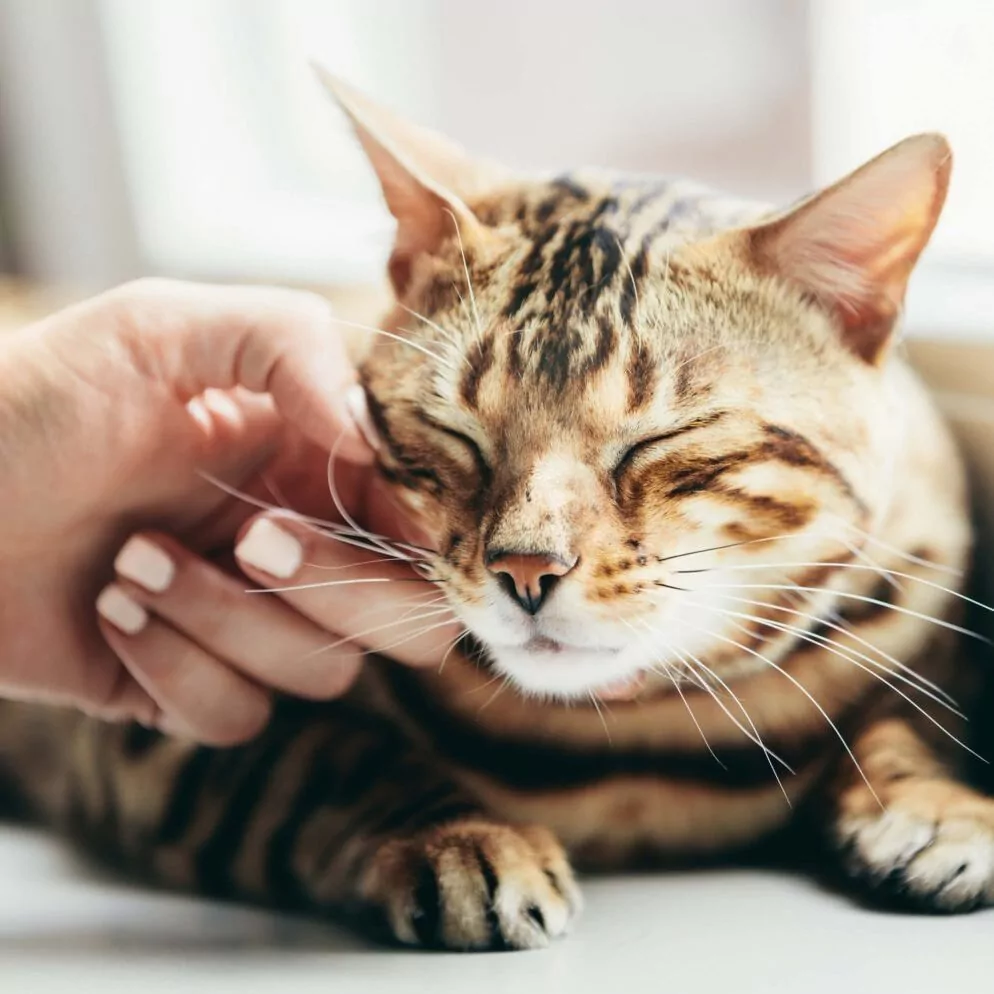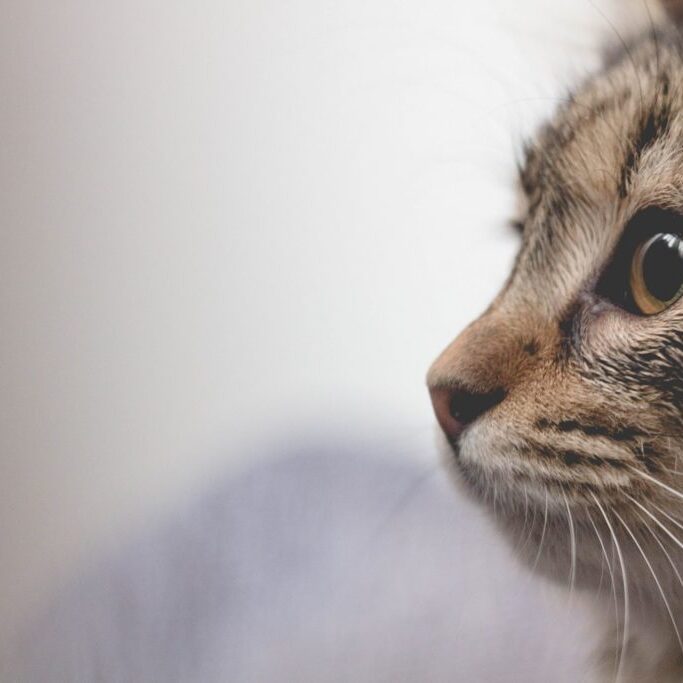Cat Health
Kitty Weight Watchers? Exercise and Counting Calories Are Good for Cats, Too

What’s your cat’s ideal weight? We bet it’s not something you’ve thought much about. Most people don’t until it’s brought home to them in a drastic way. That’s what happened to Lindsey Bullen, who was a young veterinary student when she realized with shock in a nutrition class that her cat Maya, a tortoiseshell domestic shorthair, was, yes, fat.
No one, including Maya’s veterinarians, had ever told her that before.
“I thought she was cute,” says Dr. Bullen, now a veterinary nutritionist with her own practice.
In case you haven’t heard it from your own veterinarian, there’s a pet obesity epidemic, and cats are at risk. And while we typically associate the term malnutrition with emaciation, it also applies to obesity.
“We’re seeing pets with more than 40 percent body fat,” Bullen says.
While some cats naturally skew large (think Maine Coons, Norwegian Forest Cats or Ragdolls) and a few such as the Singapura are on the tiny side, most fall squarely in the middle of the cat body spectrum. But even those cats have a variety of body shapes, ranging from slinky to stocky. No matter what shape they are, though, what they shouldn’t have is excess pounds on their frames.
On average, only five to 10 pounds separate the smallest and largest domestic breeds of cats. As little as an extra pound or two can tip cats into the overweight category and more than that can get them labeled obese. Cats don’t have body image issues, but their weight can affect them in ways that are physically and even emotionally painful or stressful.
“Fat is metabolic tissue,” Bullen says. “It is pro-inflammatory, so it puts the body in a chronic state of inflammation, which is not good.”
Most cats were not meant to weigh more than 10 to 12 pounds. Extra weight on their joints increases their risk of pain and injury. And if they injure one limb, the other three must bear the additional weight, leading to further joint pain and inflammation.
Cats carrying too much weight are prone to osteoarthritis, may have difficulty breathing with even slight exertion, and are at increased risk for cardiovascular disease, diabetes and lower urinary tract disease. All of those conditions, and the accompanying physical discomfort, stress a cat’s body. And while excess weight may not directly contribute to development of hip dysplasia in cats, excess poundage can exacerbate it, causing pain. Weight loss is one of the management recommendations for cats with the disease.
Poor grooming and skin health are also side effects of weight gain. Overweight cats have trouble grooming the furthest reaches of their body, so their hind ends don’t always get clean. That’s not pleasant for them or you. You may see scaling or hair loss in those areas.
Interactions with other household members can also be stressful for overweight cats. They’re not as quick to escape annoying puppies, bullying cats, or enthusiastic toddlers.
Finally, being overweight shortens a cat’s lifespan. If you want a long-term relationship with your cat, one that’s filled with quality time and good health, it’s important to keep her lean.
Body Basics
How do you know if your cat is overweight? You can actually determine it by using body condition scoring charts that outline different cat body states on a scale of 1 to 9.
“One out of nine is emaciated,” Bullen says. “Nine out of nine is considered morbidly obese. Five out of nine is considered ideal.”
Those ideal cats have no extra fat tissue and a nice abdominal tuck—what we would call a waist. Active, well-muscled barn cats might come in at four out of nine, but the typical housecat is in good shape at a ranking of five. That means that looking down at her, you can see a waist behind the ribs. If you were to place your hands on her back, thumbs along the spine and fingers down her sides, you would feel a slight covering of fat over the ribs, but you could still feel the ribs with minimal pressure.
A cat’s journey to the fat side can begin in kittenhood. Putting down a bowl filled with kitten food and letting the kitten choose how much to eat is a recipe for future weight gain. Most cats don’t gorge, Bullen says, but some of them have that propensity, especially if they didn’t get enough food as kittens.
Maya, for instance, was found as an emaciated kitten. Bullen, only 18 at the time, put out an “ever-lasting Gobstopper food bowl,” keeping it filled for the always hungry kitten.
Kittens who gain too much weight while they’re young pack on a different type of fat tissue than the normal fat that every animal needs for energy, protection of organs, cell growth, and nutrient absorption. It becomes more difficult for those kittens to lose weight in the future.
“Now she’s morbidly obese,” Bullen says. “She’s lost a significant amount of weight because now I’m a veterinary nutritionist and I put her on a weight-loss plan. But we’re talking about one pound a year weight loss. It has to be very slow to be safe.”
That’s because cats who don’t eat or who lose weight quickly are predisposed to developing a disease called hepatic lipidosis, which can result in liver failure or even death. Never try to wait out a cat who’s not eating, thinking that she’ll eat if she gets hungry enough. Cats who don’t eat can go downhill rapidly.
Feeding for Weight Loss
Whether your cat packed on the pounds as a kitten or as an adult, a weight loss plan worked out with your veterinarian or a veterinary nutrition specialist is the key to success. It should address diet and exercise, as well as regular check-ins to chart progress.
“In order to do it safely, the cat should be losing no more than 2 percent of body weight per week,” Bullen says. “But the truth is, because they’re a cat and it’s hard to force a cat to do anything, they’re probably going to lose between 0.5 percent and 1 percent, if they’re on a true weight loss plan.”
The way you feed your cat is one of the first things to change. If you like the convenience of free feeding, you don’t have to give it up entirely.
“Measure the amount for the day and feed that in the morning,” Bullen says. “The cat can pick at that throughout the day.” Don’t refill it until the next morning.
Bullen likes using diets formulated for weight loss because they are augmented with essential nutrients, ensuring that cats don’t lose out nutritionally even if they’re eating less food. The slight calorie reduction calls on the body to start using its internal fat stores. Regular weigh-ins at the veterinary clinic can help you stay on track.
Exercise Plan
Calorie restriction alone won’t ensure that a cat loses weight. Exercise helps, too. Not every cat is interested in going for a walk on a leash—or a treadmill, for that matter—but there are other ways to get them moving.
Cats need and enjoy playful interaction with their people. Bonus: A few minutes two or three times a day is plenty. Choose times of day that cats are most likely to be active, such as early in the morning before you go to work; twilight, when you might be relaxing yourself; and just before bedtime. Pull out a wand toy, toss a catnip mouse, or set out a track toy with balls inside it that your cat can poke, prod and push. If you have the space and the budget, try a cat wheel, the feline version of a treadmill. Some cats love them!
You can provide your cat with exercise even if you’re not at home. Hide tiny treats around the house for her to find during the day. Cats have a powerful sense of smell so once they figure out what you’re doing, they’ll be on the prowl for treat treasures. Put up a floor-to-ceiling cat tree with an outdoor view so your cat can get in some climbing during the day.
Take your cat’s condition into consideration. If he’s corpulent, go slow and easy. Don’t encourage running or jumping until he loses some weight. Doing too much too fast can injure the joints of obese cats.
For cats who are already in shape, but don’t need to gain weight, add a challenge by hiding treats on top of the washing machine (not while it’s being used), the bathroom counter, a windowsill, or the bed—any place your cat can jump on or off safely.
Preventing Weight Gain
There are a number of ways to start kittens and cats on the road to healthy eating habits. One is to place kibble inside food puzzles so they can “hunt” for their meals. Pushing a toy around to get food to drop out gets cats moving, lets them use their hunting instincts, including scenting, stalking, and pouncing behaviors, and ensures that they are more likely to eat small amounts throughout the day—the way cats eat naturally—instead of gorging on all their food at once.
You will need to teach your kitten or how to use a puzzle toy and you may need to try different types before you find one she likes best. Not every cat is willing to eat this way but for those who are, it’s a great option for not only feeding them the way nature intended but also putting their brains to work, which is important for every animal.
Transition kittens to food for adult cats when they are nine months to a year old. Young kittens are tiny, and their little bellies can’t hold as much food at one time as an adult cat. Kittens and adult cats have similar nutrient requirements but because kittens are active and growing, their food has a high caloric density so that the smaller amount they eat at one time both satisfies them and meets their needs for growth.
As kittens mature and their comfortable gastric capacity (the amount of food the stomach can hold) increases, it’s important to adjust the amount you give them to avoid predisposing them to obesity. Introducing a food for adult cats allows them to eat more food, take in fewer calories, and be less at risk for becoming obese.
Start kittens—and willing adults—on a training program. Not weight training, but trick training. If you’ve ever seen performing cats on “America’s Got Talent,” the cats jumping through flaming hoops at sunset on Key West, or a show by The Amazing Acro-Cats, you know what housecats are capable of. You can teach your cat to jump through a hoop (don’t set it on fire), sit up on his hind legs, come when called, follow a target stick, roll over, wave, and much more. Trick training enhances a cat’s mental and physical wellbeing.
Getting a Handle on Love Handles
Maya’s life in the fat lane came to an end six years ago. At the time, she weighed 18 pounds. Bullen instituted strict feeding guidelines to family members and measures the cat’s food carefully. Maya has since lost four pounds. Her weight loss plan is ongoing.
It can seem overwhelming to add a feline weight loss program to what may already be a busy life. Bullen knows. In addition to her two cats and dog, she has a husband, two kids, a thriving practice, and travels frequently for speaking engagements and conferences. She does the best she can and she’s sympathetic to clients’ own stresses when it comes to managing feline diet and exercise programs.
“If you realize your pet is obese, that’s the first step to a healthy pet and you’re already doing a great job,” she says.
Most important, be patient.
“Weight loss in a cat is a marathon, not a sprint,” Bullen says.
Did you find this helpful? Share it!
About VetScoop
Pets make our lives better. At VetScoop, we’re on a mission to return the favor by giving you access to trustworthy, science-based information so you can provide the best possible care for your pets.
Related Articles We Think You'd Like





